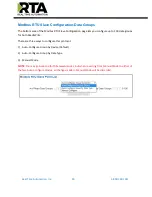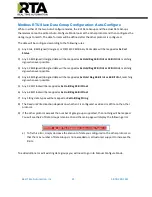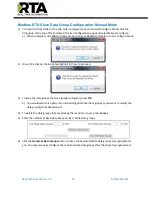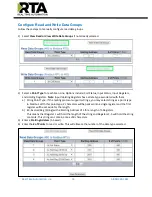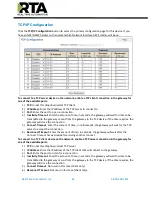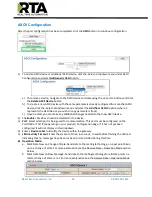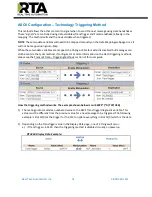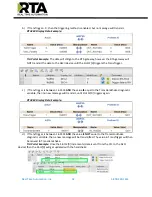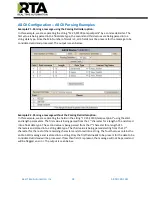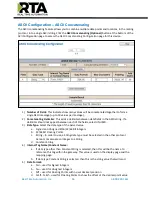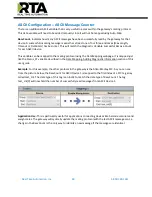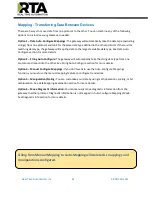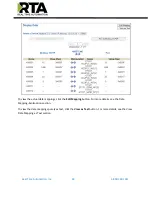
Real Time Automation, Inc.
29
1-800-249-1612
Transmit Data
– Triggering Methods
There are 3 methods that determine when the message is ready to be transmitted to your ASCII device:
1)
Cyclic
–
This means that every
x
ms a new ASCII message will be transmitted, regardless of whether
the data has changed or not.
2)
Triggering
–
This means that a trigger event determines when a new ASCII message will be
transmitted.
Some methods can co-exist with others. Here are the optional rules:
a)
Option 1:
Change-Of-State is defaulted, so this method is chosen if the Transmit Timeout field is
left at 0 and
ALL
data is new.
Example 1: From the PLC, send a message of “hello”, through the RTA gateway, the ASCII device
sees “hello”. If you send “hello’ again, nothing will happen because of the RTA Change
-of-State
Rule.
b)
Option 2:
Technology Triggering (A/USB/TCP/WI). This method is chosen if the Transmit
Timeout field is left at 0 and the trigger variables (as described in ASCII Configuration
–
Technology Triggering Method section of this manual) are mapped. This will disable Change-of-
State. This method is recommended if your product in
NOT
an 460ETC product.
NOTE:
If you have an 460ETC it’s high recommended you use the Optimization
Triggering.
Example 2: Using the Technology Triggering Mappings (shown below in the Technology
Triggering Method section
) you can make the data new only with a trigger. If you want to send
the same/new message of based on a trigger and NOT cyclically, then keep the Transmit
Timeout at 0
AND
use the 2 Trigger Mappings.
See below for more examples in the
ASCII
Configuration
–
Technology Triggering Method.





